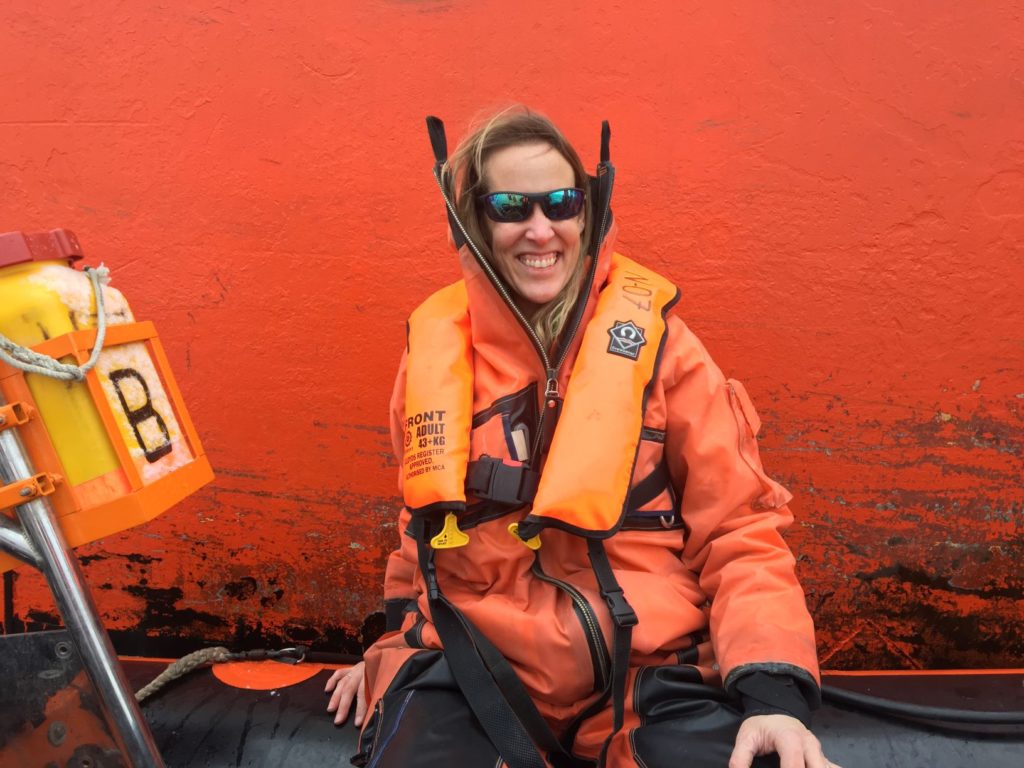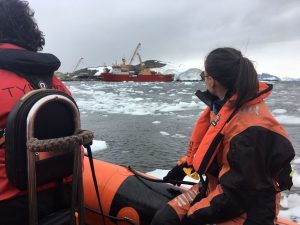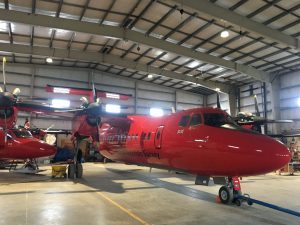Rothera

January 19 2019 (Note: this is #18 in a series of posts describing my NSF-sponsored fieldwork in Antarctica aboard the Laurence M. Gould).

View as we Approached Rothera. The British Antarctic Survey ship, the RRS Ernest Shackleton, is docked in front of the station.
Today we had the opportunity to visit Rothera Research Station, the largest British Antarctic facility. The visit is a tradition on the Palmer LTER cruise that provides an opportunity for the British and American scientists to exchange samples, and cross-calibrate equipment. It also provides a much needed break and morale boost for both groups. This year’s visit posed extra logistical challenges due to dock rebuilding and other extensive construction at Rothera. Because our ship couldn’t pull up to the dock, we needed to don drysuits and lifejackets, ride over in RIBs (rigid-hulled inflatable boats, like zodiaks on steroids), and wade the final feet into shore. Our drysuits did a great job of keeping us safe and dry, but they were very cumbersome and not too aesthetically pleasing.

Inside Rothera’s hangar. My Dad would have loved seeing this, the tour reminded me of him.
Once we got to Rothera, we had several hours to tour their facilities, take some guided hikes, and visit the station shop. As the largest station, Rothera serves as a hub and starting point for expeditions to more remote field camps. Some scientists arrive at Rothera via ship, but others are transported via an airplane that flies from the Falkland Islands. We visited the hanger and saw the large Dash 7 plane, as well as smaller planes that are used for aerial surveys and measurements, as well as transport to field camps. Some of the instruments are used to measure changes in the ice thickness and density.
It was a windy, blustery day, and I hadn’t packed enough warm clothing to make hiking enjoyable. After the initial tour, I decided to skip a hiking opportunity. Instead I curled up for an hour in the library, looking out through the telescope, writing postcards, and studying annual photos of the people who had overwintered each year (and until recently, sled dogs!). It felt a lot like hanging out in a ski lodge, and it was really unusual not to have a big list of things to do. Because I was a little worried about the drysuit/RIB/wading situation, I hadn’t even brought my computer. I had a really nice day off…well, most of a day…after we got back on the ship, I had to spend a few hours sampling copepods from my experiment and changing water. Honestly, I grumbled a little, but that’s the way it is sometimes.